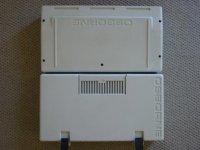@ all
I've already made a start on the article, here's where I am up to, I am trying to make this easily understandable:-
PDBEs – The Fire Retardant and the Cause of all of the Yellowing
WHAT ARE PBDEs?
Polybrominated diphenyl ethers or PBDEs, are a group of chemicals that are used as flame retardants in a variety of polymer resins and plastics. They are found in many products in most homes and businesses, including furniture, TVs, stereos, computers, carpets, and curtains. PBDEs are also used, to a lesser degree, in some textiles, adhesives, sealants and coatings.
CO-ORDINATE BONDS AND LIGANDS
Coordination compounds
Coordinate bonding is popularly used to describe coordination complexes, especially involving metal ions. In such complexes, several Lewis bases "donate" their "free" pairs of electrons to an otherwise naked metal cation, which acts as a Lewis acid and "accepts" the electrons. Coordinate bonds form and the resulting compound is called a coordination complex, and the electron donors are called ligands. A more useful description of bonding in coordination compounds is provided by Ligand Field Theory, which embraces molecular orbitals as a description of bonding in such polyatomic compounds.
Many chemical compounds can serve as ligands, often these contain oxygen, sulfur, nitrogen, and halide ions (such as bromine Br-). The most common ligand is water (H2O), which forms coordination complexes with metal ions (like the hexaaquacopper(II) ion, [Cu(H2O)6]2+). Ammonia (NH3) is also a common ligand, as well as anions, especially fluoride (F-), chloride (Cl-), and cyanide (CN-).
A coordinate covalent bond is a description of covalent bonding between two atoms in which both electrons shared in the bond come from the same atom. The distinction from ordinary covalent bonding is artificial, but the terminology is popular in textbooks, especially those describing coordination compounds. Once the bonds have been formed using this, its strength and description is no different from that of other polar covalent bonds.
Coordinate covalent bonds occur when a Lewis base (an electron donor or giver) donates a pair of electrons to a Lewis acid (an electron acceptor) to give a so-called adduct. The process of forming a dative bond is called coordination. The electron donor acquires a positive formal charge, while the electron acceptor acquires a negative formal charge.
TAED – One of the Magic Ingredients
Tetraacetylethylenediamine, commonly abbreviated TAED, is an organic compound with the formula (CH3C(O))2NCH2CH2N(C(O)CH3)2. This colourless compound is often dyed blue or green for use in laundry detergents, its most significant application. It is produced by acetylation of ethylenediamine.
Use in laundry detergents and mechanism of action
TAED is an important component of detergents and bleaches. Its is an activator for "active oxygen" bleaching agents. Such active oxygen bleaching agents release hydrogen peroxide during the wash cycle. Such agents include sodium perborate, sodium percarbonate, sodium perphosphate, sodium persulfate, and urea peroxide. The released hydrogen peroxide is an inefficient bleach below 40 °C, except in the presence of activators such as TAED.
The activation process entails a reaction of the hydrogen peroxide with TAED to release peracetic acid, which is a fast-acting beaching agent.
(CH3C(O))2NCH2CH2N(C(O)CH3)2 + H2O2 ? (CH3C(O))2NCH2CH2NH(C(O)CH3) + CH3CO3H
It is exactly this chemical which we want to produce in our magic brew; all we are doing is cutting out a few steps by using hydrogen peroxide (H2O2) directly.
UV AND BROMINE – The Magic Weapon of Choice
We are going to talk through this mechanism in a very simple way so that you get a feel for what is going on.
The role of the UV light
The ultraviolet light is simply a source of energy, and is being used to break bonds. In fact, the energies and wavelengths of the UV energy (260 nm down to just below 200 nm) are just about exactly right to break the bonds in bromine molecules to produce bromine atoms.
Because the bromine atoms have single unpaired electrons, then we call them bromine free radicals - or more usually just bromine radicals.
To show that a species (either an atom or a group of atoms) is a free radical, the symbol is written with a dot attached to show the unpaired electron. The splitting of the bromine molecule would be shown as:
Br2-----> 2Br.
Free radicals are formed if a bond splits evenly - each atom getting one of the two electrons. The scientific name given to this is homolytic fission. We actually want to break apart the bromine and oxygen by using UV light of the right wavelength to produce free oxygen and bromine radicals.
So, UV light can be used to break apart bromine bonds, this is the main reason we use it, as we want to convert the bromine to a free radical and cleave the oxygen from the end of the bromine compound.
How's it coming along, can you follow all of this so far?
Merlin

